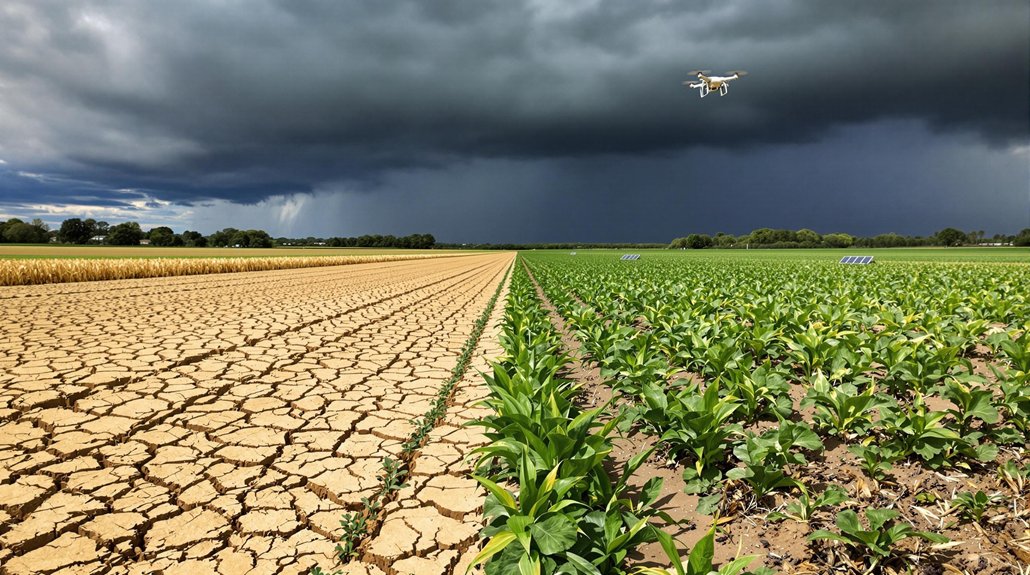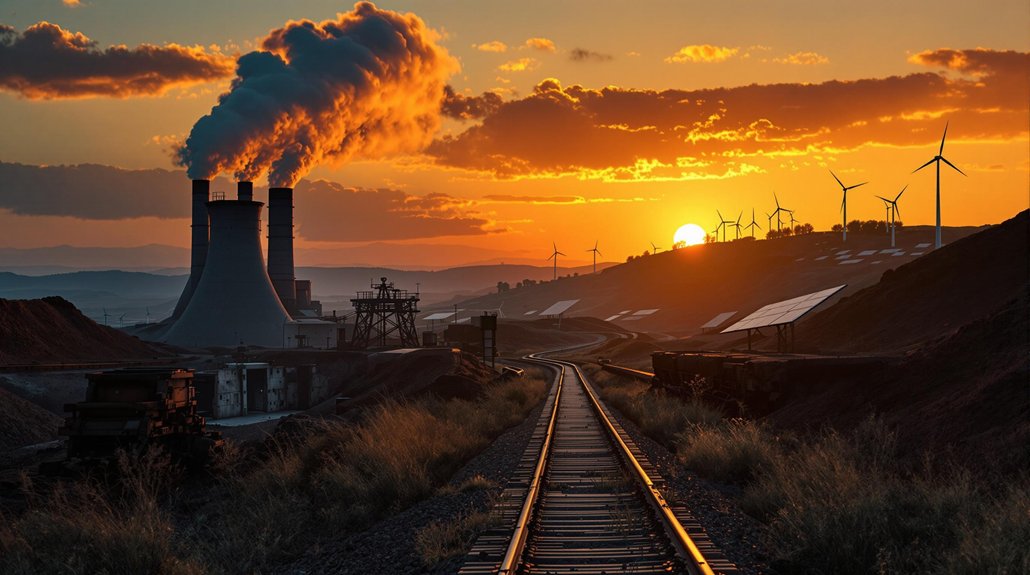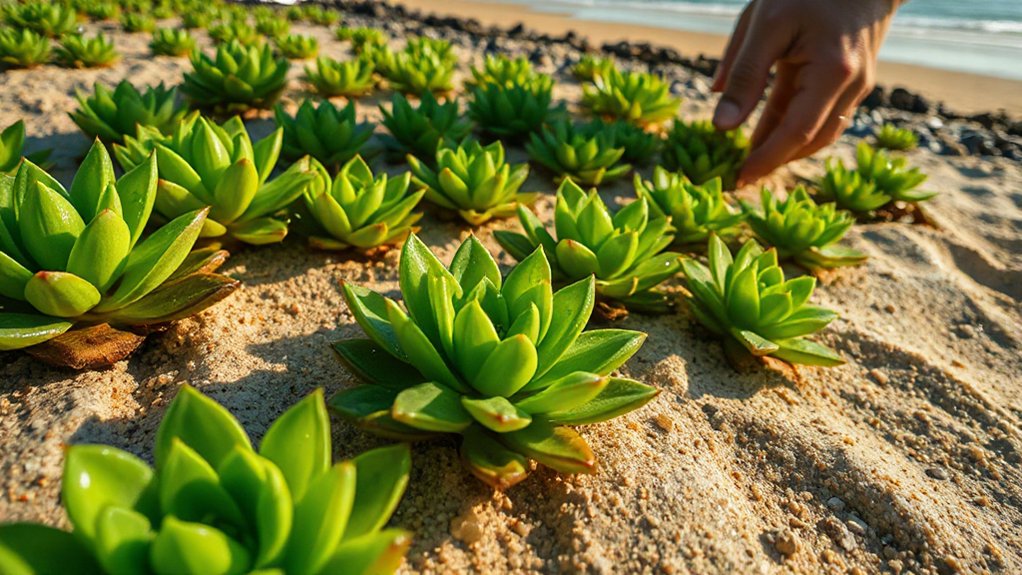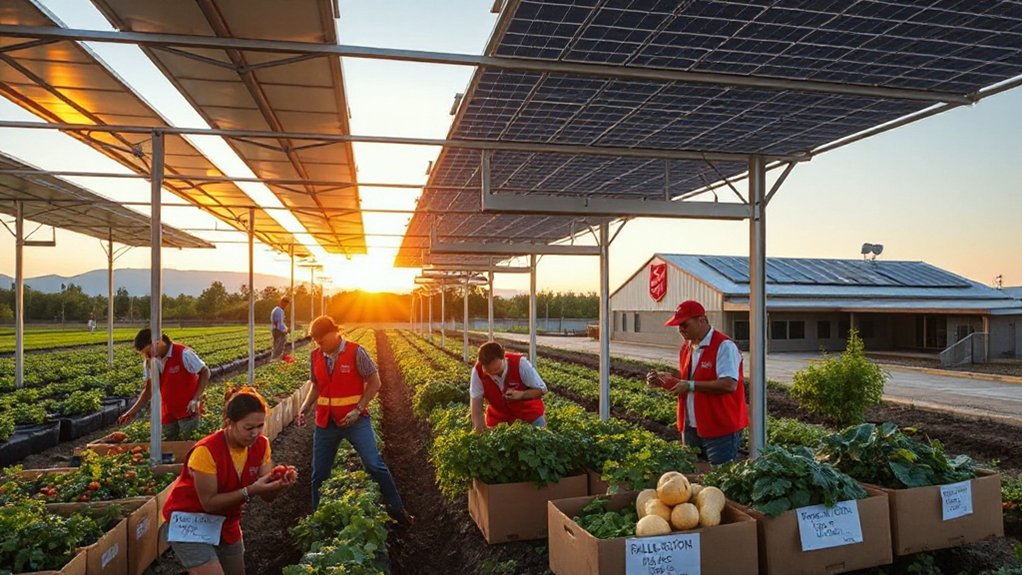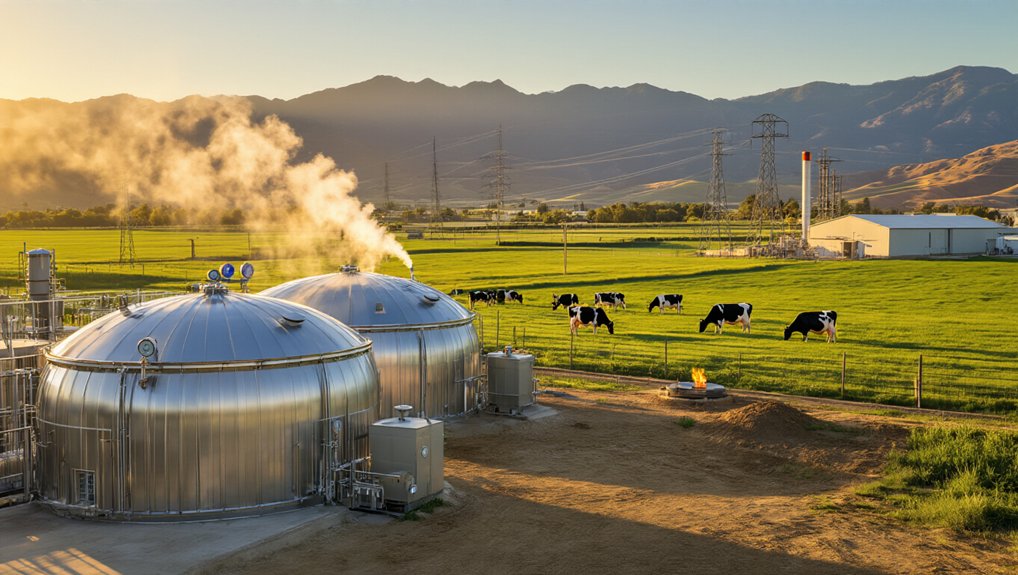Climate-smart farming offers hope amid growing climate challenges. Farmers are ditching plows for no-till approaches, planting drought-resistant crops, and harvesting rainwater like their lives depend on it—because they do. Technologies like drones and weather apps streamline decision-making while cover crops protect precious topsoil. But let’s be real: these promising practices face harsh realities. The gap between innovation and widespread adoption remains a formidable hurdle in agriculture’s climate battle.
Farmers across the globe are ditching old habits, fast. They’re trading conventional plowing for no-till approaches, letting crop residues blanket the soil instead of burning them off. Makes sense when you’re staring down a climate crisis.
Conservation agriculture is taking hold with minimal soil disturbance and strategic crop rotations. Turns out, not destroying soil structure actually helps plants grow. Who knew?
Nature already designed perfect soil. Farmers are finally noticing instead of fighting it.
The seed game is changing too. New drought-tolerant varieties are popping up that can handle Mother Nature’s mood swings. Disease-resistant breeds mean fewer chemicals. Short-cycle crops mature faster, giving farmers a fighting chance when seasons go haywire. It’s not your grandpa’s farm anymore.
Water’s getting scarce. Farmers aren’t waiting for rain dances to work. They’re installing rainwater harvesting systems and switching to drip irrigation. Every drop counts when the clouds forget to show up.
Solar-powered pumps are replacing diesel guzzlers. Less pollution, lower costs. Smart move. Floating solar installations used for pumping not only generate clean energy but also reduce water evaporation from reservoirs in drought-prone regions.
Soil isn’t just dirt. It’s alive—or should be. Cover crops prevent wind from blowing topsoil to the next county. Composting puts life back into dead dirt.
Chemical fertilizers are taking a backseat to precision nutrient management. Trees are making a comeback through agroforestry, holding soil together when storms hit. Gender-responsive approaches are essential as women farmers face greater climate risks with limited access to resources and advisory services.
Monocultures are out. Diversity is in. Farmers are planting multiple crops in the same field, integrating livestock with plants. It’s like portfolio diversification, but with actual portfolios that grow food.
Mixed farming systems spread risk when climate goes off the rails. Specialized feed formulations and rotational grazing are reducing methane emissions while boosting livestock productivity.
Tech is invading agriculture. Weather apps tell farmers when to plant. Drones monitor crops. IoT sensors track soil moisture. Farming’s gone digital, and not a moment too soon.
Meanwhile, methane capture systems are popping up on livestock operations. Carbon’s getting sequestered in soil instead of atmosphere. Renewable energy powers irrigation.
It’s all about reducing that carbon footprint while still producing food. Adaptation isn’t optional anymore. It’s survival.
